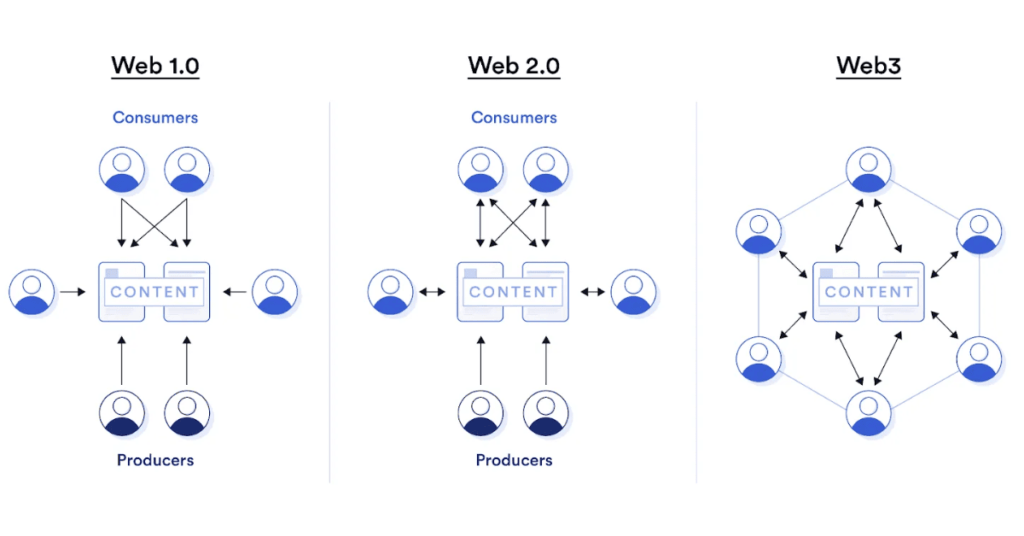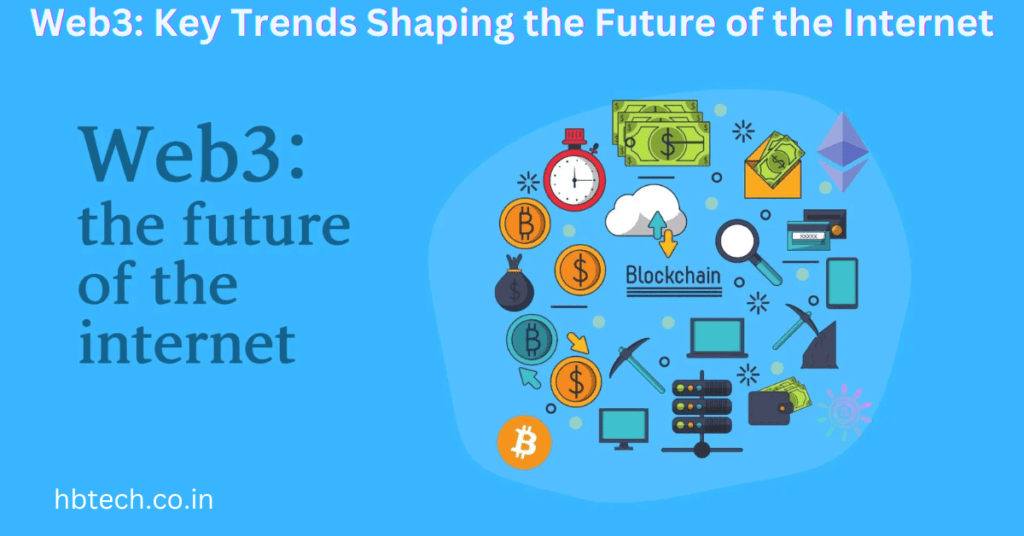
Web3 is rapidly changing how we interact with the digital world, and in 2024, it is making significant strides in areas like finance, gaming, and virtual environments. With decentralized systems and blockchain technology driving the shift, we’re starting to see real-world applications and mainstream adoption take off. Let’s explore six key trends that are shaping the future of Web3 this year.
Decentralized Finance (DeFi): A New Financial Era
Decentralized Finance (DeFi) has revolutionized how people interact with money by eliminating middlemen like banks and enabling peer-to-peer transactions. In 2024, DeFi continues to grow with innovations like liquid staking derivatives (LSDs), which allow users to earn rewards while maintaining liquidity. Plus the tokenization of real-world assets such as real estate or stocks is opening up new possibilities. These developments are making financial services more flexible and accessible, empowering people to take control of their wealth in new, decentralized ways.
NFTs and Tokenization: Beyond Art
NFTs (Non-Fungible Tokens) are no longer just digital artwork; they are transforming how we think about ownership and value. In 2024, NFTs are being used in a variety of sectors like gaming, real estate and even supply chain management. For example, in gaming, players can now own in-game assets as NFTs, which can be traded or sold. The ability to tokenize real-world assets is changing industries, allowing people to prove ownership of everything from collectibles to property with the added benefits of blockchain’s transparency and security.
Web3 Onboarding: Making the Transition Easy
While Web3 offers exciting new possibilities, it can be challenging for newcomers who are used to traditional Web2 platforms. In 2024, there’s a strong focus on making Web3 more accessible. Developers are working on simplifying the onboarding process, borrowing ideas from Web2 to create user-friendly wallets, tutorials, and other tools. The goal is to help people gradually move into the decentralized world of Web3, ensuring a smooth transition from traditional online platforms.
AI and Blockchain Integration: Enhancing Web3 Applications
Artificial Intelligence (AI) and blockchain are two of the most powerful technologies today and in 2024, they are starting to work together to enhance Web3 applications. AI can optimize blockchain systems by improving security, speeding up transactions, and analyzing large amounts of data. This combination of AI and blockchain opens up new opportunities for creating smarter, more efficient decentralized systems, such as AI–driven smart contracts or predictive analytics for financial applications.
Regulatory Compliance: Ensuring Web3’s Future
As Web3 continues to grow, regulatory compliance is becoming a key focus. Governments worldwide are starting to implement clearer rules for cryptocurrency and blockchain-based projects. For example, the European Union’s Markets in Crypto Assets (MiCA) regulation and updates in places like Hong Kong and Dubai are setting the stage for more secure and sustainable Web3 platforms. These regulations help ensure transparency, protect users, and provide more stability for the Web3 space as it becomes more mainstream.
Metaverse Expansion: Virtual Worlds Powered by Web3
The metaverse—the virtual space where users can interact in 3D environments—is growing rapidly, and Web3 is at its core. Powered by decentralized technologies like NFTs and blockchain, the metaverse is becoming a place where people can own and trade digital assets, participate in virtual economies, and have new social experiences. As the metaverse expands, Web3 is helping to ensure that virtual ownership and transactions are secure, decentralized, and transparent.
Web3 is more than just a buzzword; it’s the future of the internet. In 2024, key trends like DeFi, NFTs, AI integration, regulatory compliance, and the metaverse are making Web3 more accessible and practical. As the decentralized web continues to grow, it will unlock new opportunities for individuals and businesses alike, providing greater control, security. and flexibility in digital interactions. Whether you’re into finance, gaming, or virtual worlds, Web3 is reshaping how we experience the internet—opening up a world of possibilities for the future.
Frequently Asked Questions(FAQs)
What is Web3 and how does it differ from Web2?
Web3 refers to the next evolution of the internet, built on decentralized technologies like blockchain. Unlike Web2, which is centralized and controlled by large corporations, Web3 is focused on decentralization, giving users more control over their data, assets, and digital interactions. This shift enables new possibilities like cryptocurrency, decentralized finance (DeFi), and non-fungible tokens (NFTs).
How is Decentralized Finance (DeFi) shaping the Web3 space?
DeFi is revolutionizing traditional finance by allowing users to access financial services like lending, borrowing, and trading without intermediaries like banks. In 2024, DeFi innovations such as liquid staking derivatives (LSDs) and the tokenization of real-world assets are expanding its capabilities. These innovations are helping bridge the gap between traditional finance and the decentralized Web3 ecosystem, making financial services more accessible and flexible.
What role do NFTs play in the Web3 ecosystem?
NFTs, or Non-Fungible Tokens, are becoming an important part of Web3 beyond just digital art. In 2024, NFTs are being used to tokenize a wide range of assets, including real estate and in-game items, allowing users to prove ownership and transfer value in a secure, decentralized manner. This expansion is changing how we think about ownership and value across multiple industries.
How are Web3 platforms making it easier for new users to transition from Web2?
One of the key challenges for Web3 adoption is onboarding new users. In 2024, developers are focusing on creating user-friendly tools and interfaces that make the transition from Web2 to Web3 easier. These tools include simplified wallets, step-by-step guides, and more accessible decentralized applications (dApps). By making it easier for people to understand and use Web3 technologies, the industry is working toward bringing the next billion users online.
Why is regulatory compliance important for the future of Web3?
As Web3 technologies mature, regulatory frameworks are becoming crucial for ensuring trust and stability. In 2024, governments and regulatory bodies are starting to implement laws that address concerns around cryptocurrency and blockchain-based platforms. Clear regulations are vital for protecting users, preventing fraud, and ensuring the long-term sustainability of Web3. This focus on regulatory compliance is helping to build a more secure and trustworthy decentralized ecosystem.
Related Posts
- 2-in-1 Laptops: Tablets and Laptops in One
- 5G Technology: What It Is, It Works and Impact on Our Lives
- 8K Gaming on a Laptop: Is It Worth It?
- A Simple Guide to Remote Work: Work from Anywhere, Anytime
- A Visit to the Museum of Jurassic Technology
- Affordable AI Solutions for Small Businesses









